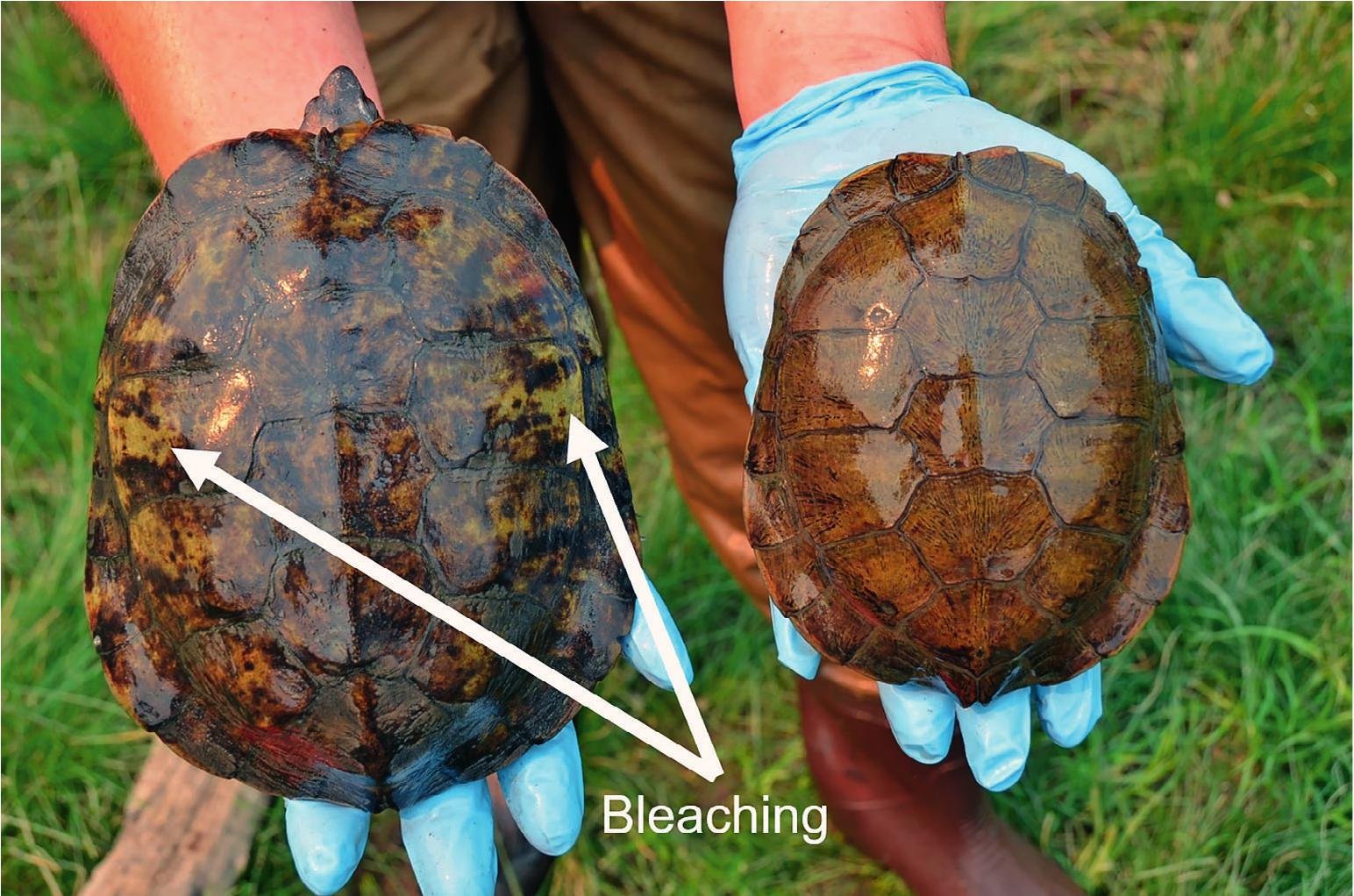Understanding Turtle Shell Disease: Causes, Symptoms, And Treatment
Turtle shell disease—a concern that affects the health and well-being of these remarkable creatures. If you’ve noticed unusual markings or discoloration on your turtle’s shell, you may be wondering what’s behind this condition. In this article, we will dive into the world of turtle shell disease, exploring its causes, symptoms, and possible treatments. Whether you’re a passionate turtle owner, a curious nature enthusiast, or simply intrigued by the wonders of the animal kingdom, join us as we shed light on this intriguing topic. Let’s embark on this informative journey together!
Turtle Shell Disease: Causes, Symptoms, and Treatment
Turtle shell disease, also known as shell rot or turtle shell infection, is a common ailment that affects turtles and tortoises. This condition, if left untreated, can lead to severe health complications and even death. In this comprehensive guide, we will delve into the causes, symptoms, and available treatments for turtle shell disease.
Section 1: Understanding Turtle Shell Disease
Turtle shell disease is primarily caused by a combination of poor husbandry practices, inadequate diet, and unsanitary living conditions. It manifests as an infection or deformation of the turtle’s shell, which serves as its protective armor. The most common pathogens responsible for shell disease in turtles are bacteria and fungi.
1.1 Causes of Turtle Shell Disease
Several factors contribute to the development of shell disease in turtles, including:
– Insufficient UVB light exposure: Turtles require UVB light to synthesize vitamin D3, which is crucial for maintaining shell health.
– Inadequate diet: Poor nutrition, including imbalanced calcium and vitamin intake, can weaken a turtle’s immune system and make it more susceptible to shell infections.
– Dirty or overcrowded living conditions: Unclean water or substrate can harbor bacteria and fungi, increasing the risk of shell disease.
– Trauma: Injuries to the shell, such as cracks or wounds, provide entry points for pathogens.
1.2 Types of Turtle Shell Disease
There are different types of shell diseases that can affect turtles. The most common ones include:
– Shell Rot: This occurs when bacteria or fungi infect the turtle’s shell, leading to a softening and disintegration of the scutes (scales) and underlying bone.
– Shell Erosion: This condition causes the gradual breakdown of the shell, resulting in pits or holes in the scutes.
– Shell Pyramiding: Not exactly a disease but a deformity, shell pyramiding is characterized by the upward growth of the scutes, resembling a pyramid-like structure. It is often a result of poor nutrition and improper habitat conditions.
Section 2: Signs and Symptoms of Turtle Shell Disease
Recognizing the signs and symptoms of turtle shell disease is crucial for early detection and prompt treatment. Here are some common indicators that your turtle may be suffering from shell disease:
2.1 External Symptoms
– Soft or mushy areas on the shell
– Discoloration, such as white or yellow patches
– Flaking or peeling scutes
– Visible signs of infection, such as redness or swelling
– Foul odor emanating from the shell
2.2 Internal Symptoms
– Loss of appetite or decreased activity levels
– Weight loss or emaciation
– Respiratory issues, like wheezing or difficulty breathing
– Shell deformities or abnormalities, such as pyramiding
It is important to note that symptoms may vary depending on the severity and type of shell disease.
Section 3: Diagnosing Turtle Shell Disease
If you suspect that your turtle may have shell disease, it is essential to consult a veterinarian with experience in reptile medicine. A thorough examination and diagnostic tests may be necessary to determine the specific type of shell disease and the best course of treatment.
3.1 Veterinary Examination
During a veterinary exam, the following assessments may be conducted:
– Visual inspection of the shell: The vet will examine the shell for signs of discoloration, softening, deformities, or other abnormalities.
– Radiography (X-rays): X-rays can help identify internal issues, such as infections or bone abnormalities.
– Microscopic examination: If necessary, a sample of the affected area may be taken and analyzed under a microscope to identify the pathogens involved.
3.2 Diagnostic Tests
Additional diagnostic tests that may be recommended include:
– Bacterial and fungal cultures: These tests can identify the specific pathogens responsible for the infection.
– Blood tests: Blood work can help assess the overall health of the turtle and identify any underlying issues contributing to the shell disease.
Section 4: Treating Turtle Shell Disease
The treatment approach for turtle shell disease depends on the specific type and severity of the condition. It typically involves a combination of medical interventions and improvements in husbandry practices. It is important to follow the guidance of a qualified veterinarian throughout the treatment process.
4.1 Medical Interventions
– Topical treatments: For mild cases, topical ointments or antiseptic solutions may be applied directly to the affected areas.
– Oral medication: In more severe cases or when the infection has spread internally, antibiotics or antifungal medications may be prescribed.
– Surgical intervention: In certain instances, surgical procedures may be required to address advanced shell deformities or remove infected tissue.
4.2 Improving Husbandry Practices
To aid in the treatment and prevention of shell disease, it is crucial to improve the turtle’s living conditions. Here are some important steps to take:
– Providing proper UVB lighting: A UVB light source is necessary for turtles to synthesize vitamin D3 and maintain a healthy shell.
– Maintaining clean water: Regularly clean the turtle’s habitat and ensure the water is free from pollutants and harmful bacteria.
– Proper diet and supplementation: Feed the turtle a well-balanced diet, including appropriate amounts of calcium and other essential nutrients.
– Maintaining optimal temperatures: Turtles require a suitable temperature gradient within their enclosure to support proper metabolism and immune function.
Section 5: Preventing Turtle Shell Disease
Prevention is always better than cure when it comes to turtle shell disease. By implementing proper husbandry practices, you can significantly reduce the risk of your turtle developing this condition.
5.1 Habitat Setup
– Provide a spacious enclosure with the appropriate substrate.
– Ensure the enclosure has a basking area with a heat source and UVB lighting.
– Maintain the temperature and humidity levels within the recommended range for your turtle species.
– Regularly clean the habitat and remove any waste or uneaten food promptly.
5.2 Nutrition and Supplementation
– Feed your turtle a well-balanced diet consisting of commercially available turtle pellets, fresh vegetables, and occasional live or frozen prey items.
– Offer calcium and vitamin supplements, as recommended by a reptile veterinarian, to ensure proper nutrition.
5.3 Regular Veterinary Check-ups
Schedule regular check-ups with an experienced reptile veterinarian to monitor your turtle’s health and address any emerging issues promptly.
Section 6: Conclusion
Turtle shell disease is a significant concern for turtle owners, but with proper care, early detection, and prompt treatment, the prognosis can be favorable. By understanding the causes, symptoms, and available treatments for shell disease, you can provide your turtle with the best possible care and ensure a happy and healthy life for your shelled companion. Remember, consult with a reptile veterinarian for accurate diagnoses and expert guidance tailored to your turtle’s specific needs.
A Turtle with Shell Rot | Dr. K’s Exotic Animal ER
Frequently Asked Questions
What is turtle shell disease?
Turtle shell disease refers to a condition where a turtle’s shell becomes damaged or infected. It can manifest in various forms, such as shell rot, shell erosion, or shell deformities. This disease is often caused by poor water quality, improper nutrition, injuries, or bacterial or fungal infections. If left untreated, it can lead to serious health issues and even death.
How can I identify turtle shell disease?
Turtle shell disease can be identified by observing physical changes in the shell. Look for signs of discoloration, patches or flakes of shell falling off, soft or mushy areas, abnormal growths, or visible signs of infection. Additionally, turtles with shell disease may exhibit behavioral changes such as decreased appetite, lethargy, or avoidance of basking areas.
Can turtle shell disease be treated?
Yes, turtle shell disease can be treated, but it is important to consult a veterinarian who specializes in reptiles. The treatment approach may vary depending on the specific type and severity of the disease. It often involves improving the turtle’s habitat conditions, such as maintaining clean water, providing appropriate UV lighting and heat, and ensuring a balanced diet. In some cases, the veterinarian may also prescribe topical or oral medications to treat the infection or promote shell healing.
How can I prevent turtle shell disease?
Preventing turtle shell disease involves providing a suitable habitat for your turtle. Ensure that the tank or enclosure is properly maintained with clean water and a proper filtration system. Regularly monitor the water quality and temperature, and provide a balanced diet rich in calcium and other essential nutrients. Avoid overcrowding the tank and minimize handling or transporting the turtle unnecessarily to reduce stress and the risk of injuries.
Is turtle shell disease contagious to humans?
No, turtle shell disease is not contagious to humans. The bacteria or fungi that may cause shell diseases are typically specific to reptiles and do not pose a significant risk to human health. However, it is still essential to practice good hygiene after handling turtles or cleaning their habitats, as they can carry other bacteria, like Salmonella, which can be transmitted to humans.
When should I seek veterinary care for my turtle’s shell disease?
If you notice any abnormalities or suspect that your turtle may have shell disease, it is advisable to seek veterinary care promptly. A reptile veterinarian will be able to diagnose the specific condition and provide the necessary treatment. Early intervention is crucial to prevent the disease from worsening and causing further harm to the turtle’s health.
Final Thoughts
In conclusion, turtle shell disease poses a significant threat to the health and survival of turtles. The disease, characterized by abnormal growths, lesions, and infections on the shell, has been increasingly observed in various turtle populations. It is crucial for researchers, conservationists, and veterinarians to collaborate and develop effective strategies to diagnose, treat, and prevent turtle shell disease. By conducting further studies and implementing targeted interventions, we can safeguard turtle populations and their vital role in maintaining healthy ecosystems. Together, we can work towards mitigating the impact of turtle shell disease and promoting the well-being of these unique and vulnerable creatures.

